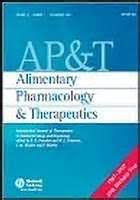Brook RA, Wahlqvist P, Kleinman NL, Wallander MA, Campbell SM, Smeeding JE
Aliment Pharmacol Ther. 2007 Sep 15;26(6):889-98.
BACKGROUND:
Employers pay more than just salary for their employees. Previous studies have largely focused on direct medical and prescription drug costs of gastro-oesophageal reflux disease (GERD), and few have reported on total absenteeism costs.
AIMS:
To examine the annual cost of illness of GERD in an employed US population by benefit category and by place of service for direct medical costs.
METHODS:
Retrospective data analysis from 2001 to 2004. International Classification of Diseases (ICD)-9 codes (530.1, 530.10, 530.11, 530.12, 530.19, 530.81, 787.1x, 787.2x or 251.5x) were used to identify employees with and without GERD (the control group). Measures included medical and prescription drug claims, plus indirect costs for sick leave, short- and long-term disability, and workers’ compensation. For a subset of the population, the direct medical claims were analysed by place of service.
RESULTS:
Data were available for 267,269 eligible employees of which 11,653 had gastro-oesophageal reflux disease. GERD was associated with a mean incremental cost of US $3,355 per employee of which direct medical costs accounted for 65%, prescription drug costs 17%, and indirect costs 19%. The place of service ‘out-patient hospital or clinic’ accounted for the largest part (47%) of the difference in medical costs.
CONCLUSIONS:
GERD is associated with substantial direct and indirect costs, which highlight the importance of managing the disease effectively.
Link to open access PDF: Brook RA, et al; Aliment Pharmacol Ther. 2007 Sep 15;26(6):889-98.


